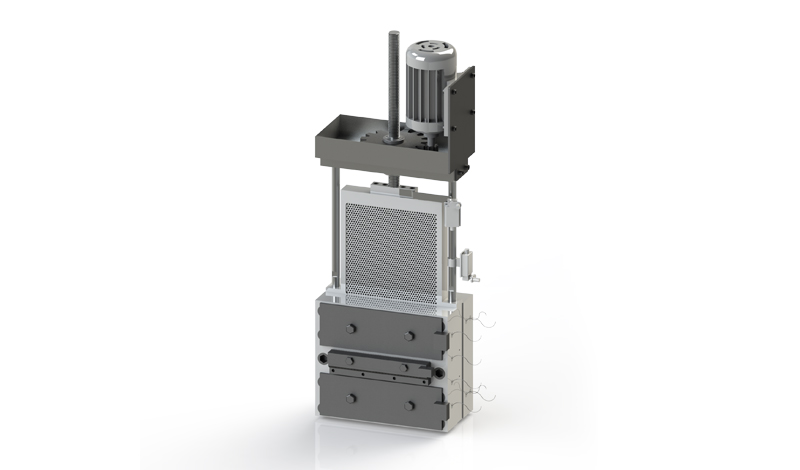

Contact us

The collection and sorting phase of plastic recycling i […]
The collection and sorting phase of plastic recycling is the crucial initial step that sets the stage for the entire recycling process. Effective collection and precise sorting are pivotal in ensuring the quality of the recycled materials and optimizing resource utilization.
Collection Methods
Curbside Collection: Many communities employ curbside collection programs where residents place their recyclable materials, including plastic, in designated bins or bags, which are then picked up by waste management services. These collections are transported to recycling facilities for sorting and processing.
Drop-Off Centers: Recycling drop-off centers provide locations where individuals can deposit their recyclables, including plastic, for later transport to recycling facilities. These centers are often strategically located to encourage recycling in residential and commercial areas.
Deposit-Return Systems: Some regions implement deposit-return systems for beverage containers. Consumers pay a small deposit when purchasing a beverage container, which they can redeem when returning the empty container to a collection point. This incentivizes the return and recycling of plastic bottles.
Commercial and Industrial Collection: In addition to residential sources, plastic waste is generated by commercial and industrial sectors. These entities often have their own collection systems or work with waste management companies to recycle plastic materials specific to their operations.
Specialized Collection Programs: Some areas implement specialized collection programs for specific types of plastics, such as plastic bags, films, or rigid plastics like PVC pipes. These programs are designed to capture materials that may not be suitable for standard recycling streams.
Challenges in Collection
Contamination: Contamination is a significant challenge in plastic collection. Non-recyclable materials, food residue, and other contaminants can diminish the quality of collected plastics, making them harder to process and recycle. Education and public awareness campaigns are essential to minimize contamination.
Consumer Participation: The success of collection programs depends on active participation from consumers. Ensuring that individuals are aware of recycling guidelines and the importance of proper disposal is crucial for effective collection.
Infrastructure and Accessibility: Adequate infrastructure and accessibility to collection points are critical. Lack of convenient drop-off locations or curbside pickup options can discourage recycling efforts.
Efficiency and Cost: Efficient collection systems are cost-effective and minimize the environmental footprint of transportation. Optimizing collection routes and logistics can reduce costs and emissions associated with plastic transport.
Sorting Technologies in Plastic Recycling Machines
The sorting phase is where advanced technologies integrated into plastic recycling machines come into play. These technologies are designed to separate plastic materials based on various criteria, such as type, color, and size. Here are some key sorting methods and technologies:
Manual Sorting: While automation is prevalent, manual sorting by trained workers is still essential in many recycling facilities. Human operators can visually identify and sort plastics based on their characteristics.
Conveyor Belt Systems: Automated conveyor belt systems transport plastic waste through the sorting process. Along the conveyor belt, various technologies are employed for efficient separation.
Optical Sorting: Optical sorting machines use cameras and sensors to identify and sort plastics based on color, shape, and material type. These systems are highly accurate and can process materials at high speeds.
Eddy Current Separators: Eddy current separators are used to separate non-ferrous metals from plastics. They use electromagnetic induction to create eddy currents in metallic objects, which are then repelled and separated from the plastic stream.
Air Classifiers: Air classifiers use air currents to separate lightweight materials from heavier ones. This is particularly useful for separating plastics from other materials in mixed waste streams.
Magnetic Separators: Magnetic separators are used to remove ferrous metals from plastic waste. They employ strong magnets to attract and separate metallic contaminants.
Density Separation: Density separation technologies, such as float-sink tanks, separate plastics based on their buoyancy in water. Different plastics have different densities, allowing for effective separation.
LDK PE WATER RING HOT CUTTING GRANULATOR
1. It' s used for LDPE,HDPE hard scrap recycling and pelletizing.
2.Round pellet , have the similar shape with the new pellet.
3.According to customers' requirement ,shaker can be adopted.
4. Water ring pelletizing could avoid the problem of strand.

Copyright © Yuyao Lvdao Plastic and Rubber Machinery Co.,Ltd. Plastic Granulation Line Supplier 浙ICP备11026885号-3



